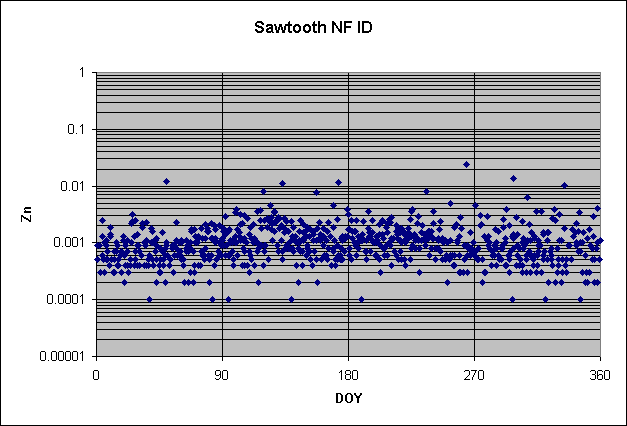
The IMPROVE data for Zn
The seasonal patterns for Zn and their spatial
distributions share features of both Pb and S. Like Pb, Zn shows a spring
maximum over much of the West that gets quickly lost east of the Rockies. Like
S, it has higher backgrounds that tend to mask its spring peaks in all but the
cleanest air, has a clear component from the north in winter, shows negative
effects in Atlantic air, and has a strong summer component in southern
California, Washington State, and east of the Rockies.
The spring peak for Zn shows up best in Idaho, southern
Oregon and northern California, and Wyoming, Colorado, and northern New Mexico,
and parts of Nevada. Its peak concentrations are the same as for Pb, 2 to 4 or 5
ng m-3, and seem to be as consistent over the area as Pb is. Here are
sample plots, for Sawtooth NF, Idaho, and Brooklyn Lake, Wyoming.

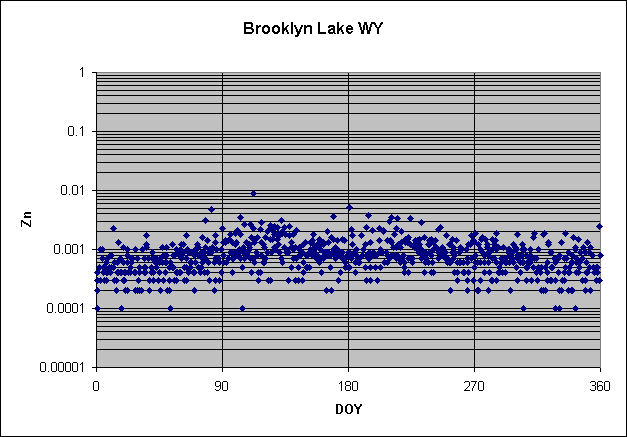
Here is the plot for a place (Yosemite) where a spring peak combined with a broad summer plateau to make a more complex pattern.

Farther south in California, the summer plateau increases to the point that it obscures the spring peak, which may also be smaller there. This is the plot for San Gorgonio Wilderness.

Here is the summer depression in concentration created at Big Bend, Texas, by incoming Atlantic air. It corresponds with the arrival of Saharan dust and low Ca/Si ratios there.
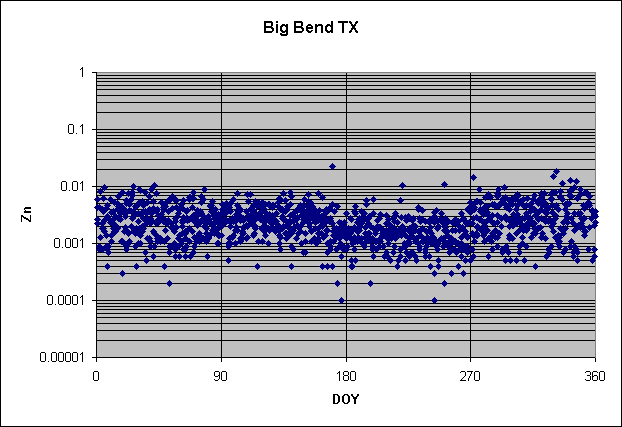
The same depression at Everglades NP, Florida, is deeper but noisier, as is the rebound in October.
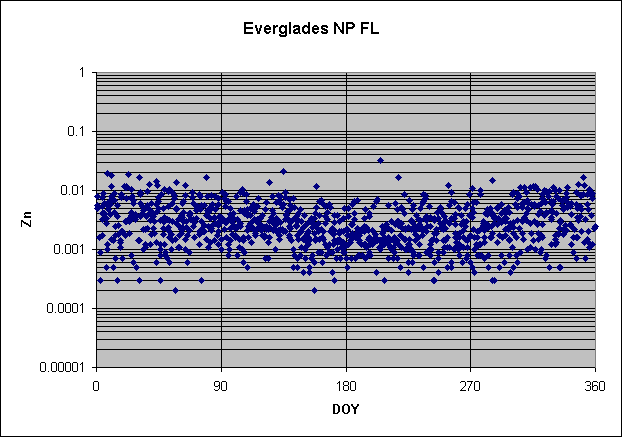
The winter maximum from the Arctic can be seen clearly at Voyageurs NP, Minnesota, and Glacier NP, Montana. Peak values are 5 ng m-3 at Glacier and closer to 10 at Voyageurs.

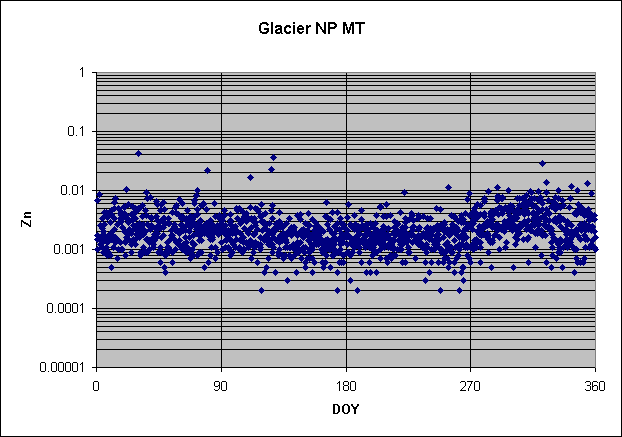
Since the corresponding peak values for Pb are 3 ng m-3 at Glacier
and 5 at Voyageurs, Zn is roughly double the concentration of Pb in the
transported Arctic aerosol. This makes the Arctic aerosol enriched in Zn by a
factor of two relative to Pb and the Pacific aerosol. (Alternatively, one may
consider the Pacific aerosol depleted in Pb relative to the Arctic aerosol.)
As with Pb, Zn follows a seasonal pattern in the East that is
nearly flat, with only modestly lower concentrations in summer at some of the
sites. Here is a typical pattern ,for Mammoth Cave NP, Kentucky.

It is unclear whether the concentrations are high in
winter because of northern aerosol or decreased local dispersion, whether they
are low in summer because of influences of cleaner Atlantic air, or whether the
pattern is a combination of both.
In summary, Zn has reasonably clear spring peaks in the West
that resemble those of Pb, a broad summer maximum in Washington State and
southern California, high concentrations in air from the north during winter,
and negative effects in the Southeast from Atlantic air.
Ahead to Zn vs. Zn at Haleakala
Back to Pb vs. Pb at Haleakala